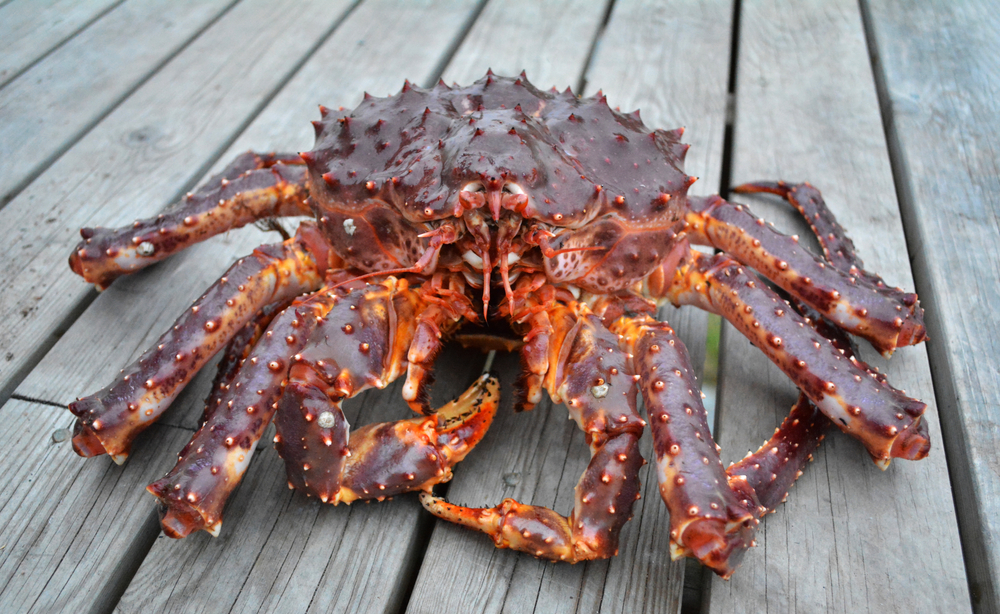Russian Fishery Company Announces Top Leadership Change as CEO Karpushin Moves to Chairman – Seafoodnews

Report on Leadership Transition at Russian Fishery Company and Alignment with Sustainable Development Goals
Executive Leadership Restructuring
- The Russian Fishery Company (RRPK) has announced a strategic leadership transition.
- Saveliy Karpushin, the former Chief Executive Officer, has been appointed to the position of Chairman of the Board.
- Konstantin Globenko, previously the Operations Director, will assume the role of Chief Executive Officer.
Strategic Priorities and Contribution to Global Sustainability
The company has reiterated its core strategic priorities, which demonstrate a significant alignment with the United Nations Sustainable Development Goals (SDGs).
-
Market Development for Healthy and Sustainable Marine Products
The continued focus on developing consumption of high-quality pollock products directly supports several key SDGs:
- SDG 2 (Zero Hunger): By providing a reliable source of high-quality protein, the company contributes to improved nutrition and global food security.
- SDG 3 (Good Health and Well-being): Promoting the consumption of healthy seafood supports public health initiatives and well-being.
- SDG 12 (Responsible Consumption and Production): Encouraging the consumption of sustainably sourced pollock fosters responsible patterns of production and consumption.
-
Modernization of the Fishing Fleet
The commitment to renewing the fishing fleet is integral to advancing industrial and environmental sustainability goals:
- SDG 9 (Industry, Innovation, and Infrastructure): Investing in a modern fleet represents a direct investment in resilient infrastructure and promotes innovation within the fishing industry.
- SDG 14 (Life Below Water): New vessels are crucial for the conservation and sustainable use of marine resources, often equipped with technology that reduces environmental impact and bycatch.
-
Enhancement of Labor Conditions
Improving the working conditions for fishermen is a primary objective that aligns with social sustainability targets:
- SDG 8 (Decent Work and Economic Growth): This priority directly addresses the goal of promoting sustained, inclusive economic growth by ensuring decent, safe, and secure working environments for all employees.
1. Relevant Sustainable Development Goals (SDGs)
Based on the article, the following SDGs are connected to the priorities of the Russian Fishery Company (RRPK):
-
SDG 2: Zero Hunger
The company’s focus on the “development of consumption of healthy, high-quality products from pollock” directly relates to providing a source of food.
-
SDG 8: Decent Work and Economic Growth
This goal is addressed through the stated priority of “improvement of working conditions for fishermen” and the company’s general operation in Russian and international markets, contributing to economic activity.
-
SDG 9: Industry, Innovation and Infrastructure
The commitment to the “renewal of the fishing fleet” points to investment in modernizing industrial infrastructure.
-
SDG 14: Life Below Water
As a major fishery company, its core operations are intrinsically linked to the sustainable use of marine resources. The “renewal of the fishing fleet” can imply a move towards more sustainable fishing technologies, and its market activities relate to the economic benefits derived from marine life.
2. Specific SDG Targets
The article’s content points towards several specific SDG targets:
-
Target 2.1: End hunger and ensure access to safe, nutritious food
The company’s priority to develop “consumption of healthy, high-quality products from pollock” aligns with this target by aiming to increase the availability of a nutritious food source.
-
Target 8.8: Protect labour rights and promote safe and secure working environments
This is directly identified in the article through the stated goal of “improvement of working conditions for fishermen.”
-
Target 9.4: Upgrade infrastructure and retrofit industries to make them sustainable
The plan for the “renewal of the fishing fleet” corresponds with this target, suggesting an upgrade of industrial assets. A modern fleet is often more efficient and environmentally friendly.
-
Target 14.4: Effectively regulate harvesting and end overfishing
While not explicitly stated, a large-scale “renewal of the fishing fleet” by a major company implies an engagement with modern, and presumably more sustainable, fishing practices and regulations to ensure the long-term viability of pollock stocks.
3. Mentioned or Implied Indicators
The article does not mention any specific, official SDG indicators. However, progress towards the company’s stated priorities, which align with the SDG targets, could be measured using the following implied indicators:
- For the “improvement of working conditions for fishermen” (Target 8.8), an implied indicator would be the frequency rate of fatal and non-fatal occupational injuries among fishermen.
- For the “renewal of the fishing fleet” (Target 9.4), an implied indicator would be the amount of investment in new, modern vessels or the percentage of the fleet replaced with more efficient technology.
- For the “development of consumption of… pollock” (Target 2.1), an implied indicator would be the volume of pollock products sold in domestic and international markets.
4. Summary Table of SDGs, Targets, and Indicators
| SDGs | Targets | Indicators (Implied from Article) |
|---|---|---|
| SDG 2: Zero Hunger | 2.1: By 2030, end hunger and ensure access by all people… to safe, nutritious and sufficient food all year round. | Volume of healthy, high-quality pollock products supplied to Russian and international markets. |
| SDG 8: Decent Work and Economic Growth | 8.8: Protect labour rights and promote safe and secure working environments for all workers… | Metrics related to the “improvement of working conditions” (e.g., reduction in accident rates, improved worker benefits). |
| SDG 9: Industry, Innovation and Infrastructure | 9.4: By 2030, upgrade infrastructure and retrofit industries to make them sustainable… | Number of new vessels added or percentage of the fishing fleet renewed/modernized. |
| SDG 14: Life Below Water | 14.4: By 2020, effectively regulate harvesting and end overfishing… to restore fish stocks… | Adoption of sustainable fishing technologies and practices as part of the fleet renewal. |
Source: seafoodnews.com

What is Your Reaction?
 Like
0
Like
0
 Dislike
0
Dislike
0
 Love
0
Love
0
 Funny
0
Funny
0
 Angry
0
Angry
0
 Sad
0
Sad
0
 Wow
0
Wow
0







































































